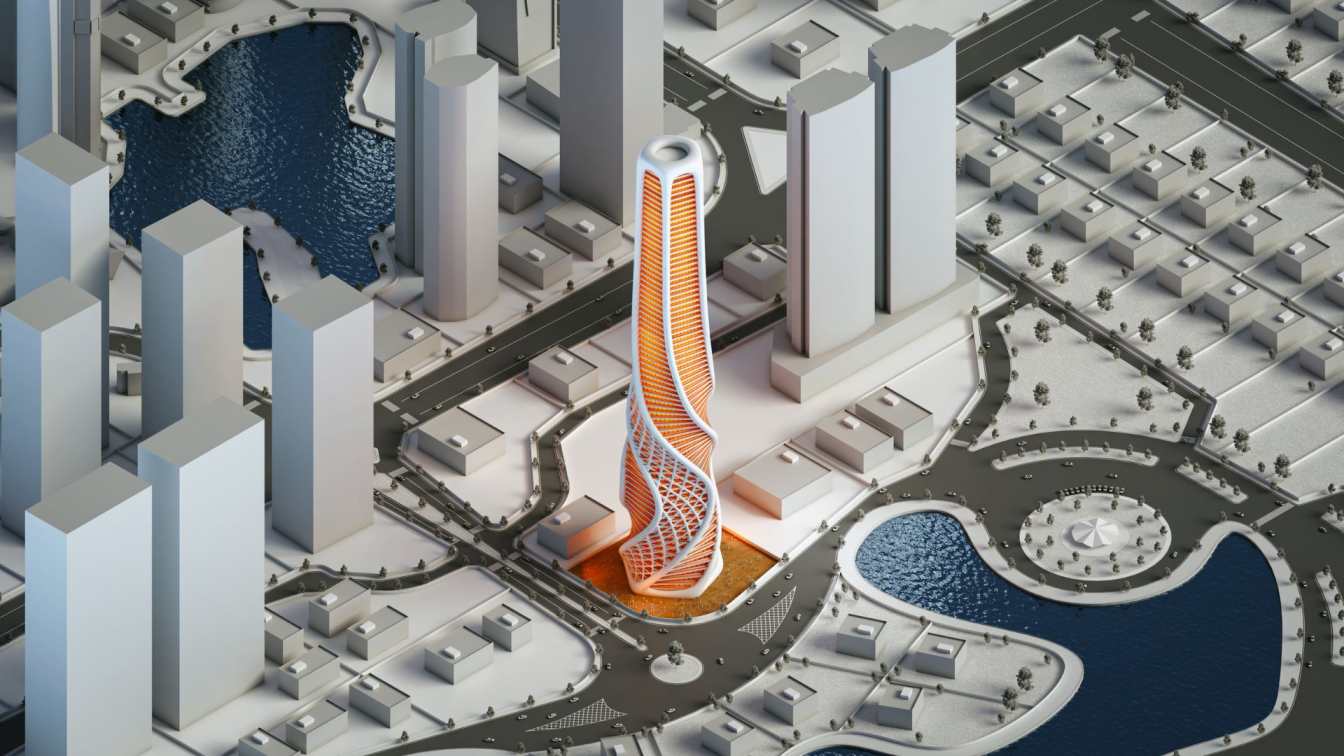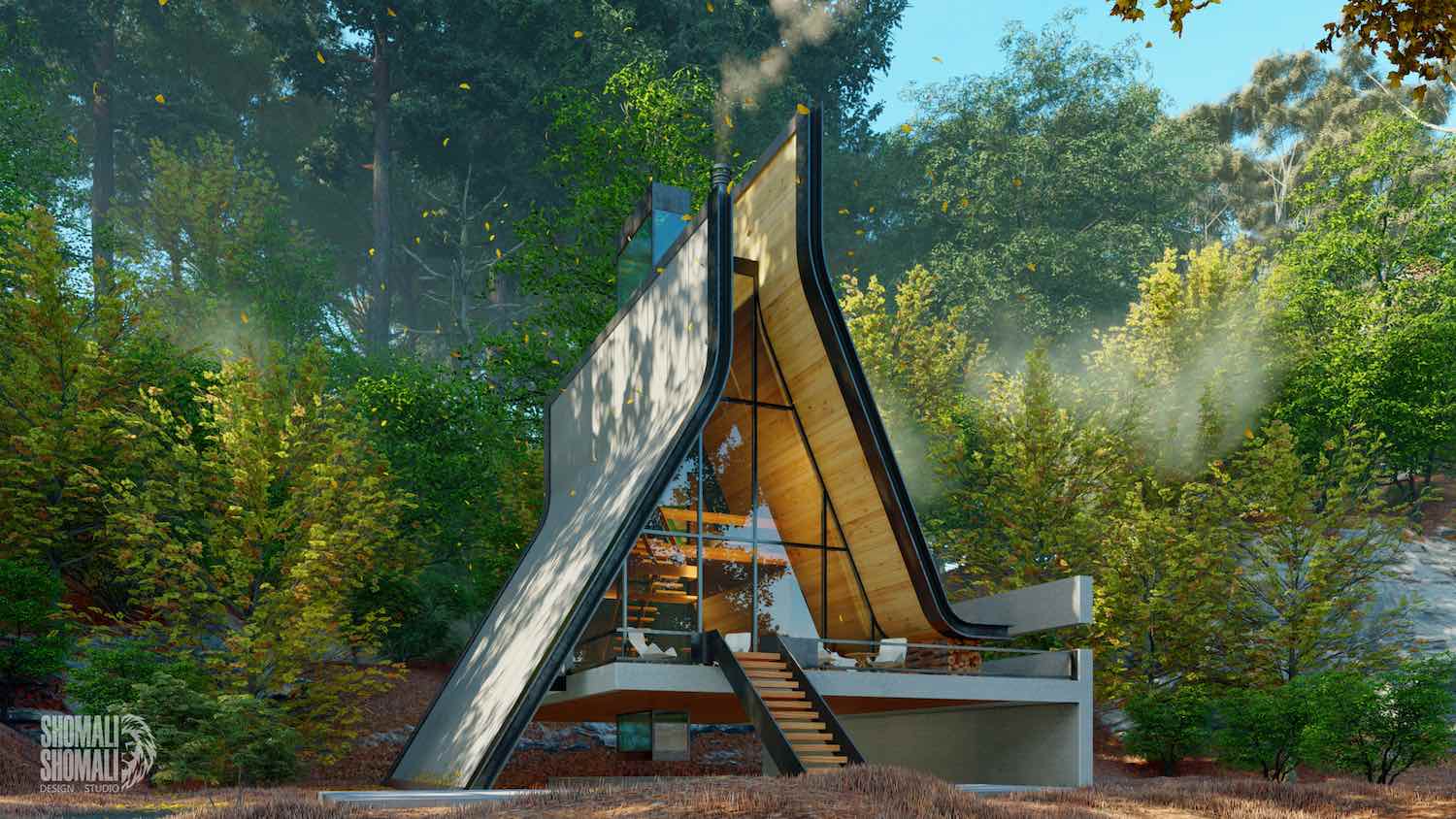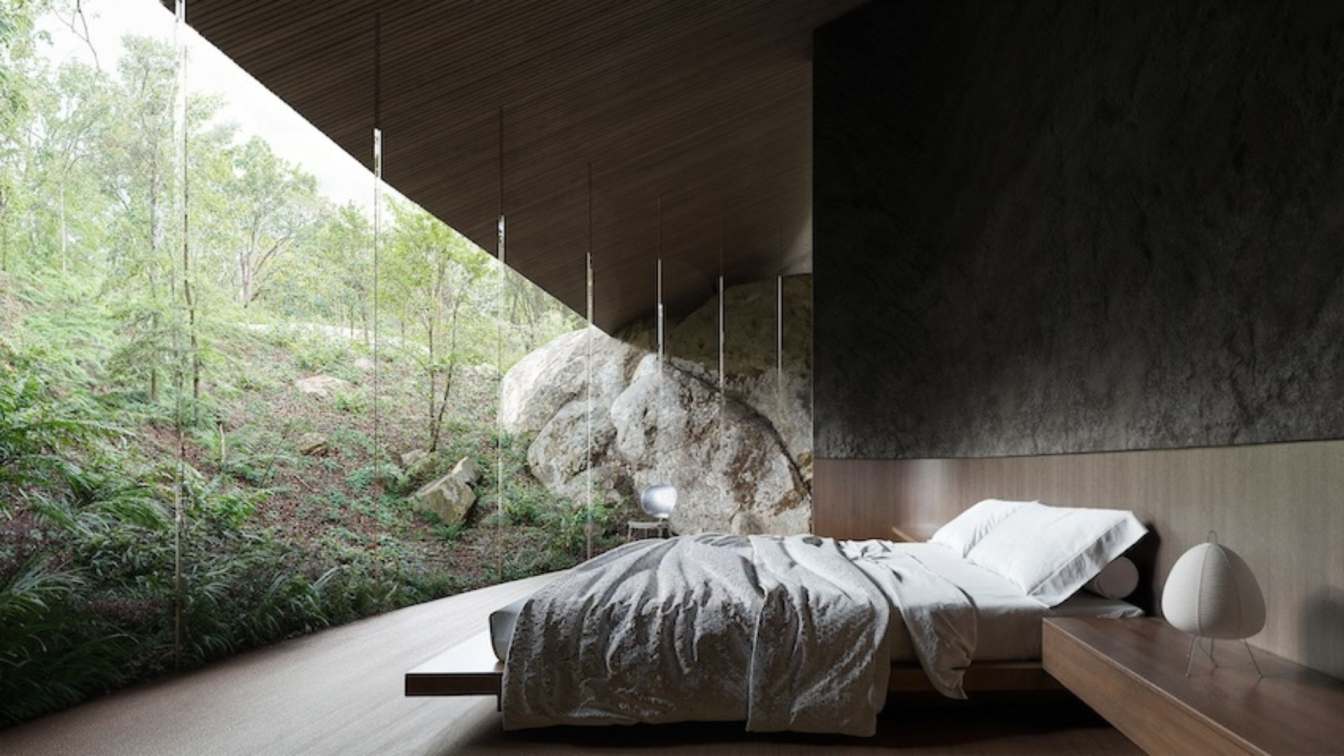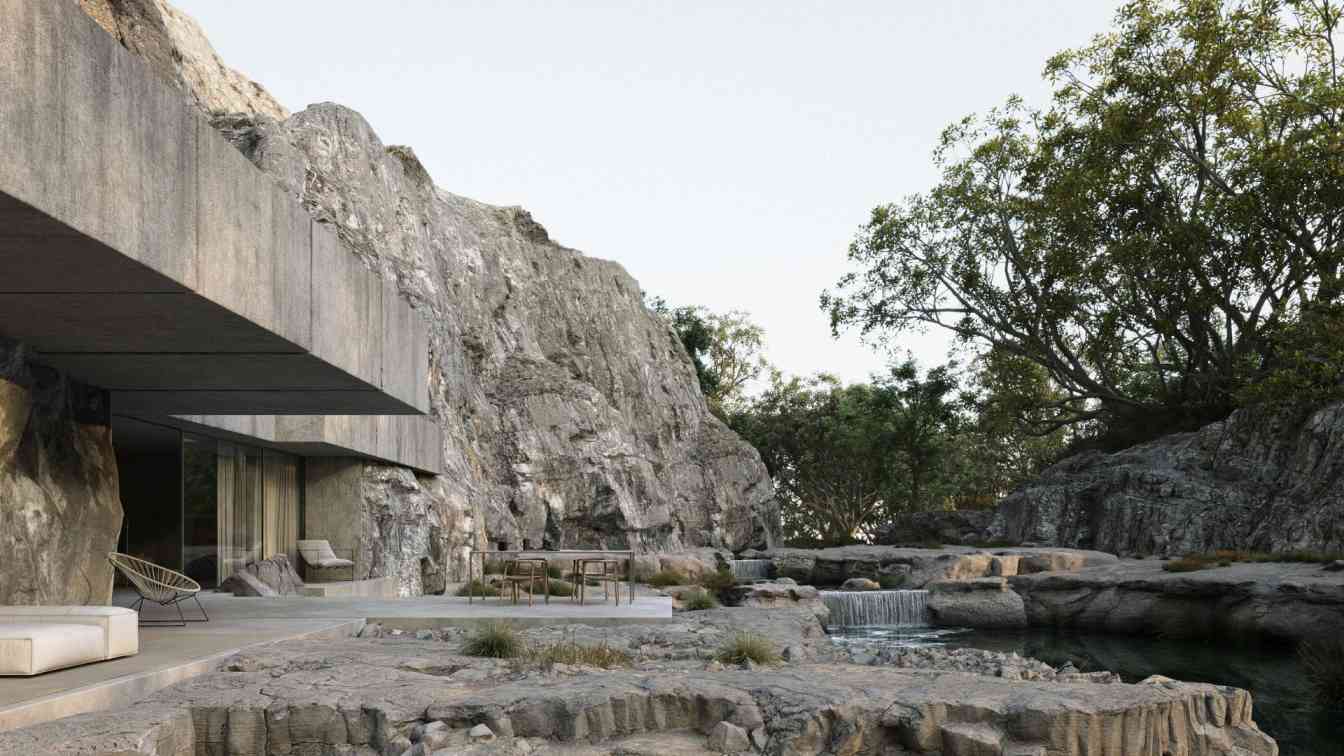Mohammad Jumaa: A striking and expressive example of parametric architecture, the Helixa Skyscraper was created to work in harmony with the surroundings rather than just withstand it. The tower is shaped directly in response to dominant wind patterns, transforming environmental limitations into chances for creativity and adhering to the principles of performance-driven design. The design welcomes the wind as a co-author rather than an enemy, letting aerodynamic forces guide the shape, flow, and operation of the entire vertical structure.
The tower's recognizable twisted appearance is the outcome of a careful environmental and computer investigation rather than an artistic indulgence. The design team simulated several situations that would effect a high-rise structure of this size by mapping the prevailing wind forces over multiple heights and periods using parametric methods. This input is directly translated into built shape by the final form, which is a dynamic, helicoidal geometry. The wind sculpts the building throughout this process rather than merely touching it.
Algorithmic design is crucial to Helixa's evolution. A feedback loop between digital simulations and form production was created by combining environmental plug-ins like Ladybug and Butterfly with computational design software like Grasshopper for Rhino. Wind direction, speed, vortex shedding, and surface pressure were among the parameters that were examined and included into the form's logic. Because of this, every twist and curvature has a function, which is to reduce structural stress, minimize wind load, and improve overall aerodynamic performance.

The form can develop naturally while making sense thanks to this parametric methodology, which guarantees that every design choice is supported by facts. For example, the surface articulation is modified to reduce drag, and the curvature tightens or loosens according on the intensity of turbulence. In addition to increasing the tower's structural efficiency, these ongoing improvements also enhance thermal performance, natural ventilation, and user comfort at different elevations.
In terms of structure, the twisted design improves torsional rigidity, which helps the tower's spine distribute stresses more evenly. This maximizes the useful floor area and permits a smaller core without sacrificing stability. By adding a fluid and dynamic visual language that reflects motion and resonates with the metropolitan skyline, the form simultaneously disrupts the monotony of rectilinear towers—an architectural gesture captured in time.
The form complements passive design techniques from an environmental perspective. By minimizing extended exposure to the sun on crucial facades, the direction and curvature aid in lowering heat input. In order to capture solar energy without sacrificing the building's aerodynamic profile, photovoltaic surfaces are included into the facade's shape where applicable. Furthermore, the spiral shape directs wind flow around open terraces and integrated sky gardens, encouraging natural ventilation and establishing microclimates that enhance ecological performance and human well-being.

In terms of functionality, Helixa is a vertical ecosystem rather than just a tower. Each activity, from high-density office spaces to public sky decks, green sanctuaries, and collaborative hubs, benefits from strategic access to light, air, and views thanks to the internal program's layering in rhythm with structural zones. In an otherwise highly vertical setting, the spiraling terraces serve as urban balconies that promote social interaction and offer respite.
Helixa's philosophical foundation distinguishes it from traditional high-rise architecture. It is an example of the symbiotic relationship between natural force and created form, not just a tall structure intended to defy gravity. A structure that not only adapts to its surroundings but is actually created by them thanks to parametric thinking transforms the design into an interaction between nature and technology.
In the context of modern architecture, the tower also represents innovation. Helixa suggests a new design philosophy in an age of pressing climate change and fast urbanization, one in which form is found rather than imposed—an emergent geometry that reacts, adapts, and performs. It serves as a template for future urban planning that combines sustainability, lyrical expression, and computational intelligence.
In summary, the Helixa Skyscraper is a parametric statement rather than just an architectural achievement. An example of how design may create structures that are both effective and inspiring when it is based on environmental logic and enabled by digital tools. It challenges us to reconsider the skyscraper as a living, breathing system that is dynamically interacting with its environment rather than as a sealed monolith.













